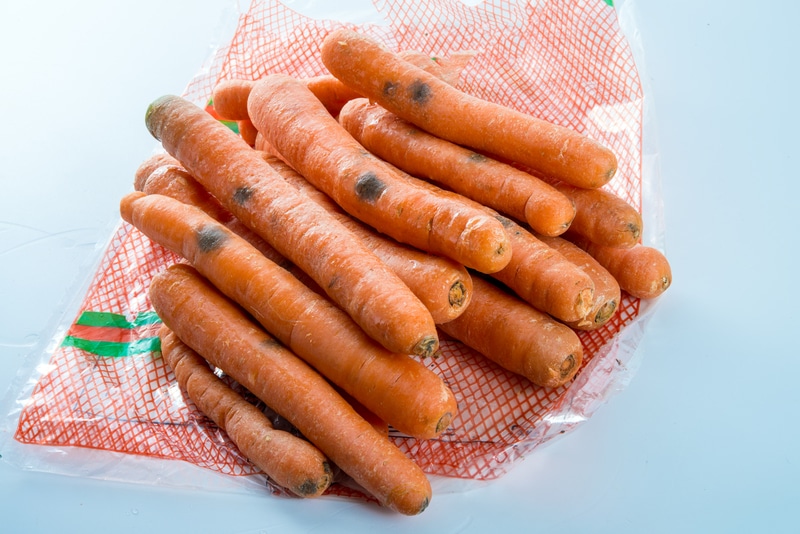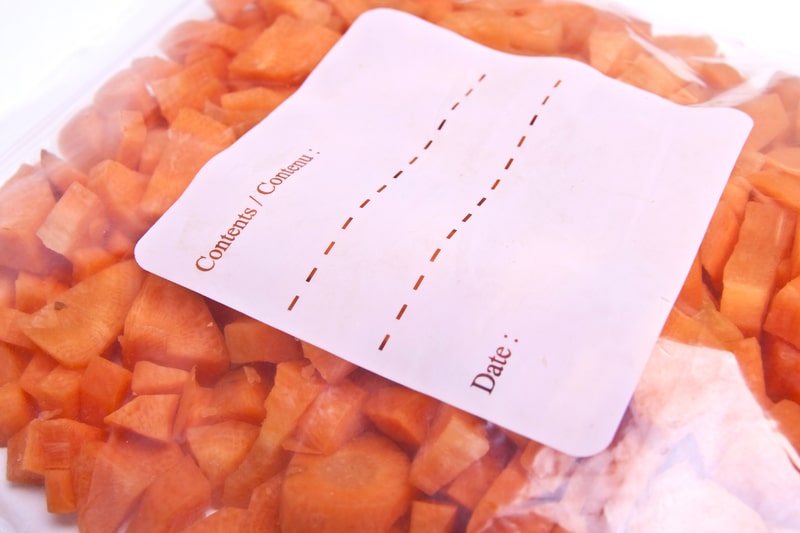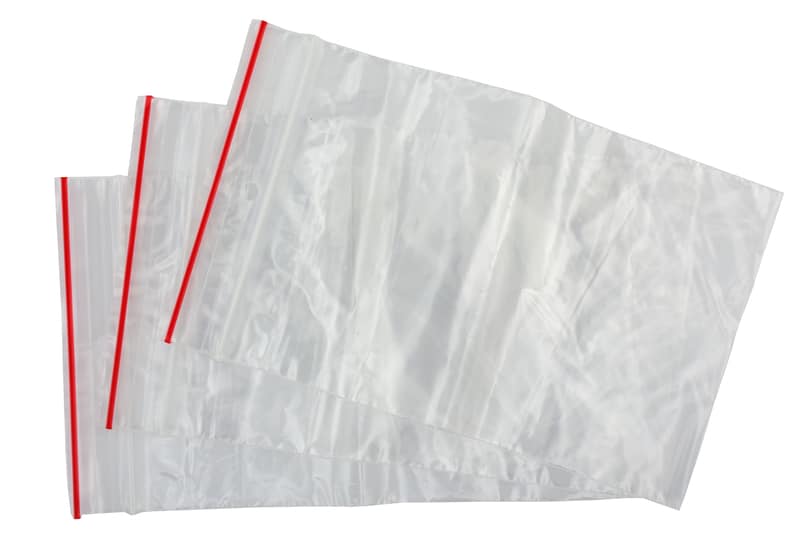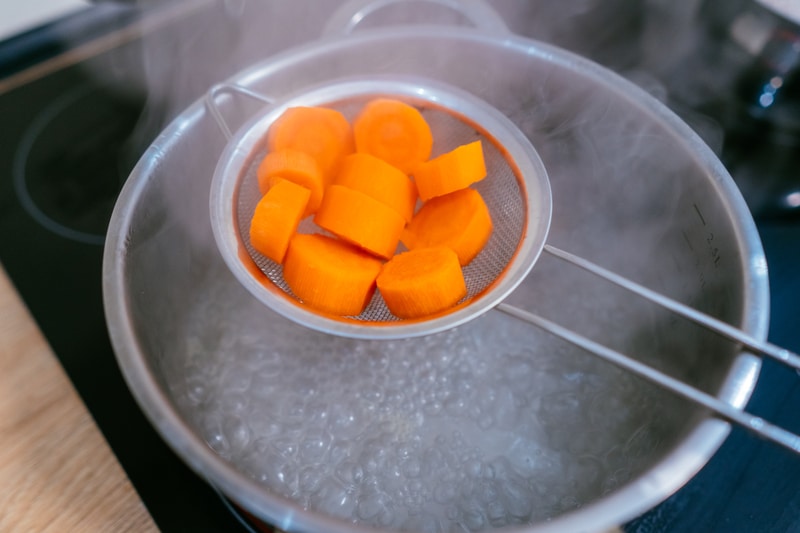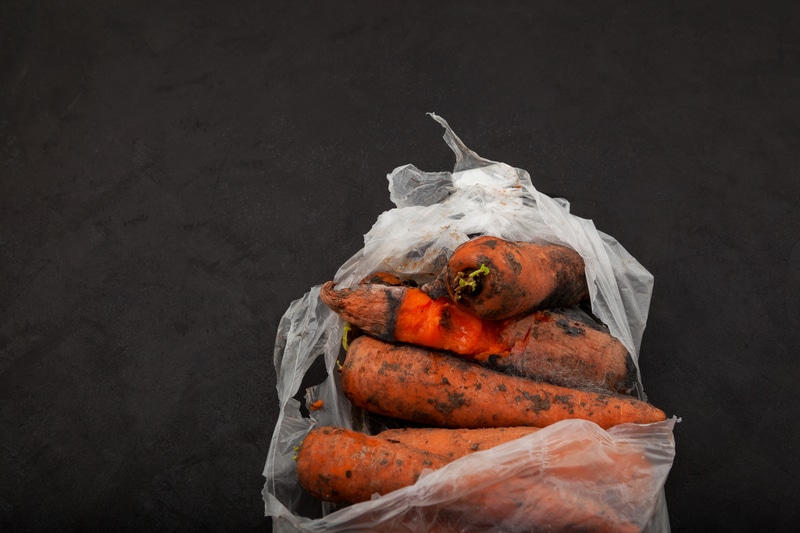
The carrots are available in every season and are used in cooking recipes as well as salads. The high antioxidant levels make them a healthy choice, which is why many people stock up on carrots when they are available at more affordable rates.
It’s common for people to freeze the carrots it prevents spoilage and keeps the carrots crunchy. However, if you had put the carrots in the freezer but they have brown marks, we are sharing what it means and what can be done to prevent it!
Carrots Turned Brown In Freezer
Brown Marks On The Frozen Carrots
The carrots are usually frozen after blanching to make sure they are preserved properly and don’t become rubbery. However, if there are brown marks on the carrots, it’s a sign of spoilage and such carrots shouldn’t be consumed.
The brown marks indicate a bacterial infestation and usually happen when the freezer is turned off while the carrots are in there.
That’s because proper temperature maintenance is essential to freeze the carrots and improper thawing can lead to spoilage, hence the brown marks.
The Signs Of Spoiled Carrots
If you are unable to determine if the carrots have been spoiled or not, there are some signs that you should look out for, such as;
- First of all, you have to look for white spots or white blush. The white spots develop in the form of a thin layer and happen when the carrots are exposed to the outer atmosphere, causing dehydration. So, the carrots with white spots or blush should be discarded
- Secondly, if the carrots have a mushy texture or there is a slimy layer on the carrots, they should be discarded immediately. The consumption of slimy or mushy carrots can be bad for your health. In addition, if the carrots have shrunk from their original size, they shouldn’t be consumed
- Lastly, spoiled carrots have a bad odor because bacteria produce such odor. For this reason, we recommend that you smell the carrots and discard them if there is a weird smell
Preventing The Development Of Brown Marks
When the brown marks start appearing on the frozen carrots, it indicates that you didn’t follow the correct freezing protocol. Many people just put their carrots in the freezer and expect them to last for months but it’s not true.
So, we are sharing the dos and don’ts of freezing the carrots
- The Dos Of Freezing The Carrots
- Before you put the carrots in the freezer, let them dry in the sun for one to two days to dry out the moisture. That’s because moisture on the exterior skin can lead to rotting. Once dried, put the carrots in a dry plastic bag and put the bag in the freezer
- Make sure you trim the green part of the carrot because the green tops are known to extract moisture from the carrot, which causes rotting. So, cut the top green part before putting the carrots in the freezer
- It’s not related to freezing but it’s recommended that you peel off the exterior layer of the frozen carrots to make sure you only add fresh carrots
- If you purchased frozen carrots from the grocery store, make sure you keep them in the original film packing as the packaging film is designed to optimize long-term storage
- Always blanch the carrots before freezing as it helps prevent the development of mold, brown, and rubbery texture
- Invest in plastic bags or ziplock bags to store the carrots in a freezer as it helps retain the moisture and lengthens the shelf life
- Don’ts Of Freezing The Carrots
- Never wash the carrots before putting them in a freezer (they should be dried instead)
- Always store a large number of carrots in smaller batches rather than using one big container as it helps prevent mold development and bacteria growth (it can lead to brown marks)
- Don’t freeze the old carrots because younger ones have a better chance of thriving because of the less fibrous content
- Don’t use the frost-free section of the freezer, so it’s best to deep-freeze the carrots
- Don’t freeze the carrots next to pears, apples, and potatoes, because they release ethylene gas which can develop a bitter flavor in carrots
- Don’t try to save the damaged carrots by freezing them because it can ruin the fresh ones in the process
The Right Way Of Blanching The Carrots
We have already mentioned that properly blanching the carrots before freezing can help increase the lifespan in the freezer. Blanching also prevents mold growth and rubbery or slippery layer on the carrots.
That’s because blanching restricts enzyme activation, preventing spoilage.
In particular, the fresh carrots undergo enzyme activation when they are exposed to the atmosphere. However, blanching stops this process and you can follow the below-mentioned steps to blanch the carrots before freezing;
- First of all, you have to boil water at high heat – you have to boil one gallon of water for one pound of carrot
- If the carrots are bigger, cut them into slices of chunks (you don’t have to cut the baby carrots). In addition, the young carrots need to be washed and peeled while green tops should be removed from every carrot
- Now, put the carrots in boiling water and wait for five minutes to let the water start boiling again
- Once you have given them a boil, remove them with the help of a slotted spoon and drop them into a container that’s filled with ice-cold water to chill the carrots
- Then, drain out the excess water and use a paper towel to blot the carrots (you have to dry the carrots properly)
- The next step is to put the dry and blanched carrots in a plastic bag and put the bag in the freezer. However, make sure that you leave 0.5 inches of empty space
Keep in mind that you shouldn’t blanch the carrots for more than five minutes as it results in a softer texture, which makes the carrots unfit for freezing.
